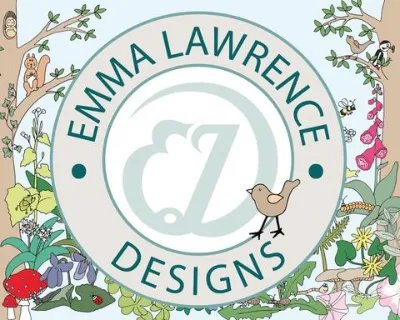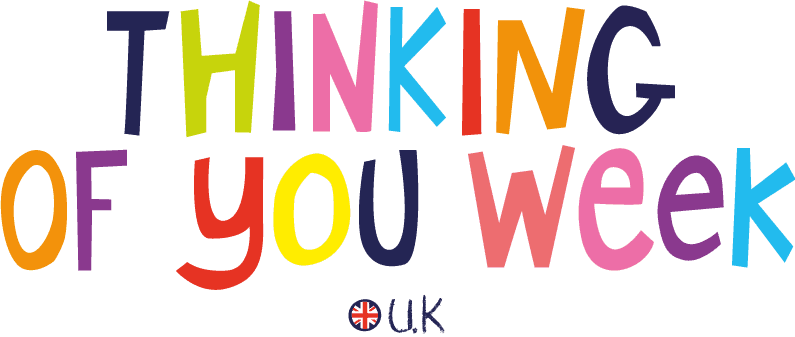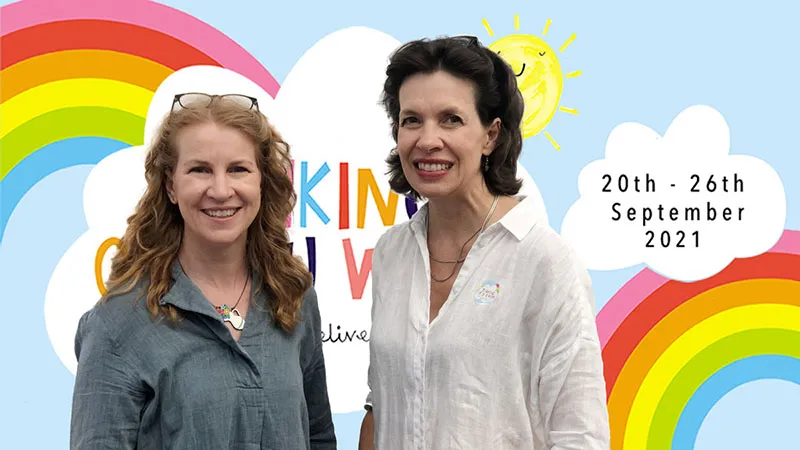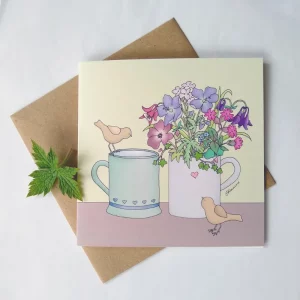Guest post By Dr Emma Lawrence, Illustrator & Owner Emma Lawrence Designs.
Following a successful career as a Clinical Neuropsychologist, Emma now publishes greetings cards, as well as undertaking commissions and licensing her designs for home and giftware. Although her change in direction seems very far removed from her life in the NHS, she recognises the benefits of sending cards on mental health and discusses here the psychology of greetings cards:
The Power of Cards
Illustrated greetings have been sent since the 15th century, with commercial card production starting in the 1860s. Since then, millions of messages have been sent from person to person all over the World. Every stage of selecting, sending and receiving cards has a psychological element. From choosing a card for someone special, to receiving a surprise in the post, nothing can replace the feelings that cards evoke.
There are many reasons for sending a card but whatever the occasion, alongside the picture on the front, you are expressing an emotion and communicating a feeling to the recipient. This isn’t just in the words written in the card but the card itself and the whole process of sending a card.
When a card is received, an emotional response is elicited. The limbic system plays a part in this stage, with its role in behaviour, emotion and emotional memory. Studies have found that the emotional response to a greetings card is greater than to a digital message or email. A card is often easily recognised amongst the dull, typed envelopes containing bills or bank statements. This creates an immediate feeling of excitement, anticipation and surprise. Even if you are expecting cards on a birthday, you never know until you tear open the envelope what the card will look like or what is written inside. Some cards are so beautiful or significant that they can feel like receiving a gift.
Benefits to mental wellbeing
The benefit of cards are that they are tangible and tactile. They create not only an emotional connection between the sender and recipient but a physical one too, knowing the card has been touched by both parties. They can be held and kept and cherished. The words inside are a physical record and together with the imagery on a card, makes that message more memorable. When information is presented both verbally and visually, we are more likely to remember it.
The benefits to mental wellbeing are numerous. The recipient can feel more socially connected and less alone. Reducing a sense of isolation through sending a card is an easy way to make a difference and show that you are thinking of that person. Knowing that someone has taken the time to choose a card sends a clear message that they want to keep in touch. They may also feel more worthwhile and valued, knowing that someone has put in the care and effort to send a card. For an anniversary or birthday, the sender will feel reassured that they haven’t been forgotten and that their relationship is appreciated. A sympathy card can communicate comfort and tenderness, a get well card can inspire hope and show how much you care, whereas a birthday or just because can convey humour, fun and happiness.
It isn’t just the recipient that benefits psychologically from receiving a card, but the sender too. Research shows that being kind and generous leads to more positive mood and less anxiety. The evidence certainly points to the fact that sending and receiving cards leads to greater happiness through keeping us emotionally connected. Thinking of You Week is another good reason to send a card to let those who are important to us know just how special they are. Send a card today and make their day!

Further information on the power of cards
See our Interview with Dr Lynda Shaw
Royal Mail Mindlab research – proof that a card is key to a mum’s heart!
Also see the heartwarming film showing the greeting card community keeping in touch during the lockdowns in 2020 due to COVID



